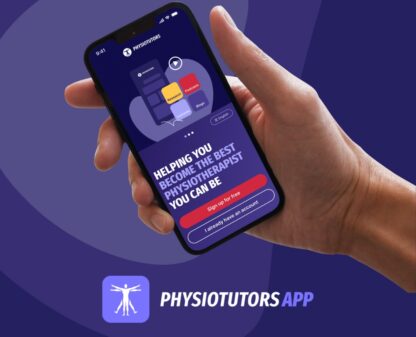Medial Collateral Ligament Tear

Body Chart

- Medial aspect of the knee
Background Information
Patient Profile
- Young athlete
- Usually an isolated injury
- Combined injury in 95% of cases with ACL injury, of which 78% are ACL injuries with Grade III injury of the MCL
Pathophysiology
Mechanism of injury
- Direct Valgus-stress with foot planted +/- tibia in external rotation
- “popping” sound often mentioned
Source
Acute:
- Atrophy or weakness; plyometric deficits
- Capsule/ligament damage or degeneration
- Valgus stress; Foot planted
Grades
- Grade I: 0-5mm gap, painful to touch, no instability
- Grade II: 6-10mm gap, painful to touch, no instability
- Grade III: >10mm gap in 0° and 30° flexion, commonly valgus- and rotatory instability
Course
MCL Grade I & II injuries can successfully be treated with conservative management using a brace and physiotherapy. Grade I & II injuries have had good short term prognosis with early return-to-play. There is good long term prognosis with >90% regaining normal knee function during sports in isolated grade I & II MCL injuries
History & Physical Examination
History
History of knee trauma. Knee exposed to high loads in work, sport, ADL usually trauma. Older patients also inadequate trauma (degenerative tear)
- “Giving way” to the side (medially and in internal rotation)
- Feeling of instability in medial direction and internal rotation
- Acute: Swelling at medial side of the knee, limited ROM, local/stinging/superficial to deep pain
- Chronic: Feeling of instability, “giving way” despite complete wound healing
Physical Examination
Inspection
Acute: Signs of inflammation medial side, possible hemarthrosis, protective posture
Chronic: Quadriceps/gastrocnemius atrophy, barely any swelling
Functional Assessment
Acute: not possible due to symptoms
Chronic: Deep squat, climbing stairs, cutting motion, “giving way” rather described than demonstrated
Active Examination
Acute: limited ROM in Flex/Ext/Rot and pain upon small load
Chronic: end of range limitation in Flex/Ext; high loads in combination with these movements is painful
Passive Examination
Acute: PROM limited, swelling
Chronic: End or range ROM can be limited, structural instability apparent
Special Testing
Differential Diagnosis
- Subchondral injury
- Damaged cartilage
- Gonarthrosis
- Avulsion fracture biceps femoris
- Tibial plateau fracture
- Unhappy triad
- Pes anserinus irritation
- Patella luxation
- PFPS
- Quadriceps tendon rupture
- Patella tendon rupture
- Osgood Schlatter
Treatment
Strategy
Conservative: coper, isolated injury, >45 years old, linear sportsSurgical: non-coper, multidirectional injury, <45 years old, high risk sports
Interventions
Post-OP: Reach milestones of each rehabilitation phase before progressing. Adapt to tissue healing phases
Conservative: Identify deficits in strength, neuromuscular control, passive structures
Principles: concentric before eccentric, slow to fast, low load + high rep to high load + low rep, two-legged to one-legged, pay attention to sport specific demands
References
- Adams, D., Logerstedt, D. S., Hunter-Giordano, A., Axe, M. J., Snyder-Mackler, L. (2012). Current concepts for anterior cruciate ligament reconstruction: a criterion-based rehabilitation progression. J Orthop Sports Phys Ther, 42(7), 601-614. doi:10.2519/jospt.2012.3871
- Derscheid, G. L., & Garrick, J. G. (1981). Medial collateral ligament injuries in football. Nonoperative management of grade I and grade II sprains. Am J Sports Med, 9(6), 365-368.
- Elliott, M., & Johnson, D. L. (2015). Management of medial-sided knee injuries.Orthopedics, 38(3), 180-184. doi: 10.3928/01477447-20150305-06
- Hewett, T. E., Di Stasi, S. L., & Myer, G. D. (2013). Current concepts for injury prevention in athletes after anterior cruciate ligament reconstruction. Am J Sports Med, 41(1), 216-224. doi: 10.1177/0363546512459638
- Lundberg, M., Messner, K. (1996). Long-term prognosis of isolated partial medial collateral ligament ruptures. A ten-year clinical and radiographic evaluation of a prospectively observed group of patients. Am J Sports Med, 24(2), 160-163.
- Powers, C. M. (2010). The influence of abnormal hip mechanics on knee injury: a biomechanical perspective. J Orthop Sports Phys Ther, 40(2), 42-51. doi: 10.2519/jospt.2010.3337
- Snyder-Mackler, L., Risberg, M. A. (2011). Who needs ACL surgery? An open question. J Orthop Sports Phys Ther, 41(10), 706-707. doi: 10.2519/jospt.2011.0108
- Zazulak, B. T., Hewett, T. E., Reeves, N. P., Goldberg, B., Cholewicki, J. (2007). Deficits in neuromuscular control of the trunk predict knee injury risk: a prospective biomechanical-epidemiologic study. Am J Sports Med, 35(7), 1123-1130. doi: 10.1177/0363546507301585


